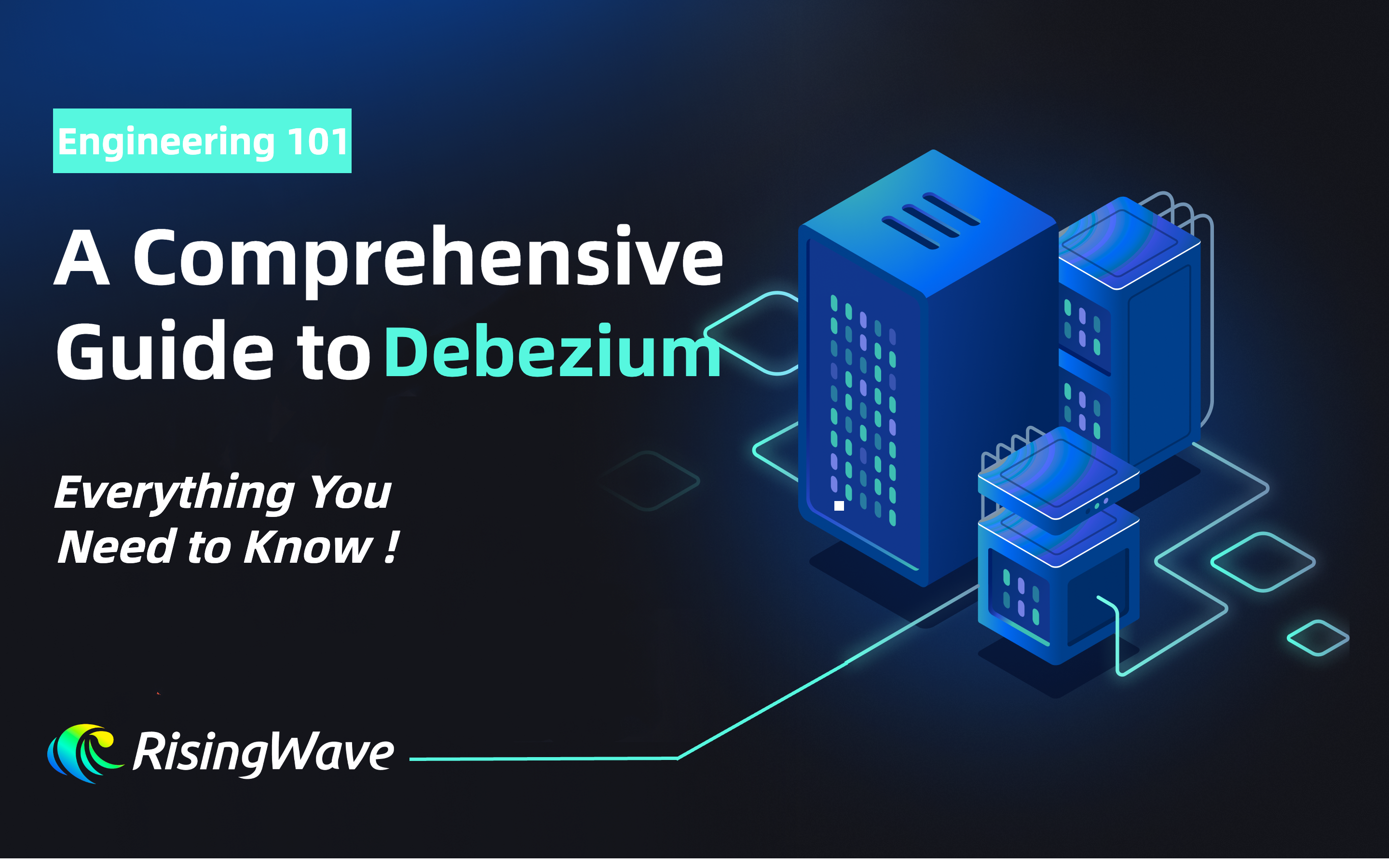Introduction to Debezium
Debezium is a distributed platform that revolutionizes the way data management is handled. It captures and streams database changes in real-time, making it a powerful tool for Change Data Capture (CDC), enabling real-time data integration and analysis.
The Evolution of Data Management
The traditional approach to data management involved static databases that were updated periodically. However, with the advent of Debezium, this paradigm has shifted towards dynamic data streams. Debeziumfacilitates the transformation of existing databases into event streams, allowing applications to detect and respond almost instantly to each committed row-level change in the databases.
Overview of the Debezium Platform
Debezium is an open-source distributed platform built on top of Kafka, providing Kafka Connect compatible connectors that monitor specific database management systems. Its key features and capabilities include capturing each row-level change in every database table in a change event record and streaming these records to Kafka topics. Applications can then consume these streams, receiving the change event records in the same order they were generated.
Understanding Debezium and Its Core Components
Debezium, as an integral part of modern data management, leverages the power of Apache Kafka to facilitate Change Data Capture (CDC) and enable real-time data integration and analysis. By treating existing databases as event streams, Debezium allows applications to consume database changes completely and accurately using Kafka. This approach enables real-time viewing and response to changes, revolutionizing the way data is managed.
The Role of Kafka in Debezium
Kafka plays a pivotal role in the Debezium platform by providing a reliable streaming platform for capturing and consuming changes that occur in a database correctly and completely. It treats existing databases as event streams, allowing real-time viewing and response to changes. Debezium relies on Kafka's capabilities to monitor and record row-level changes in source database tables through transaction logs, enabling applications to respond to incremental data changes with low latency.
How Kafka Facilitates Change Data Capture
Kafka's architecture ensures that all data changes are captured with very low delay and without any alterations to the data model. Multiple Kafka Connect service instances can be deployed across a cluster, ingesting changes from different databases using change data capture. This process guarantees the accurate capture of all data changes, making them available for consumption by downstream applications.
Connectors: The Heartbeat of Debezium
Connectors are at the core of Debezium's functionality, serving as the bridge between source databases and Apache Kafka. The Debezium MySQL connector is particularly significant, as it allows for seamless integration with MySQL databases, capturing row-level changes efficiently. Additionally, exploring other connectors such as those for PostgreSQL and beyond expands the scope of Debezium's compatibility with various database management systems.
Debezium Connectors
The connectors provided by Debezium play a crucial role in ensuring fast and reliable change data capture from different databases. These connectors enable applications to react quickly to data changes by leveraging existing Kafka infrastructure for streaming joins, data enrichment, domain events creation, data movement, complex event processing, and more.
How Debezium Works
As a leading platform for Change Data Capture (CDC), Debezium excels in capturing and streaming database changes in real-time, revolutionizing the way data is managed. This section will delve into the process of Change Data Capture and how Debezium effectively deals with challenges such as crashes, fails, and stops while ensuring data consistency and recovery.
The Process of Change Data Capture (CDC)
Change Data Capture (CDC) is a critical process that involves identifying and capturing change events within databases. Debezium stands out in this aspect by providing a distributed, open-source, low-latency, data streaming platform built on Apache Kafka. It leverages Kafka to facilitate CDC, ensuring that every committed row-level change in the databases is captured accurately and completely. Unlike other CDC tools that may have different architectures and technologies, Debezium focuses on ensuring data consistency and recovery without any data loss.
In practical terms, Debezium's CDC process involves monitoring specific database management systems using its Kafka Connect compatible connectors. These connectors capture each row-level change in every database table in a change event record and stream these records to Kafka topics. Applications can then consume these streams, receiving the change event records in the same order they were generated.
Dealing with Challenges: Crashes, Fails, and Stops
One of the key strengths of Debezium lies in its ability to handle challenges such as crashes, fails, and stops while ensuring data consistency and recovery. When it comes to crashes or failures of the Debezium MySQL connector or other connectors like PostgreSQL connector, Debezium is designed to be durable. This means that even if there are crashes or failures at any point during the capture process, Debezium ensures that no data is lost.
Additionally, when dealing with unexpected stops or failures during the capture process, Debezium employs robust mechanisms to recover from these situations seamlessly. This ensures that all changes are captured accurately without any gaps or inconsistencies.
In comparison to other CDC tools which may not guarantee such durability or seamless recovery from crashes or failures of connectors affecting source databases like MySQL or PostgreSQL, Debezium stands out as a reliable solution for organizations seeking uninterrupted Change Data Capture capabilities.
Real-World Applications of Debezium
As organizations continue to embrace the power of Debezium for real-time data integration and analysis, its applications in streamlining application development and enhancing data analytics and monitoring have become increasingly prevalent.
Streamlining Application Development
Debezium has emerged as a powerful tool for simplifying application development by enabling apps to react quickly to data changes. This capability is particularly valuable in scenarios where applications need to respond almost immediately to database changes. By leveraging Debezium's connectors, apps can start responding to insert, update, and delete events without missing a beat. This streamlined approach ensures that applications commit changes with low latency, providing a seamless experience for end-users.
The comprehensive guide to Debezium Change Data Capture highlights how companies are using Debezium to build scalable and fault-tolerant data pipelines for various use cases. The platform's ability to capture change events with low-latency and real-time data changes makes it an ideal choice for organizations looking to streamline their application development processes.
Enhancing Data Analytics and Monitoring
In addition to streamlining application development, Debezium plays a crucial role in enhancing data analytics and monitoring through its robust Change Data Capture capabilities. Leveraging change events for real-time insights, organizations can gain valuable visibility into their databases' row-level changes. This enables them to make informed decisions based on the most up-to-date information available.
The uses of Debezium emphasize how it enables applications to respond almost immediately to database changes, providing real-time monitoring and recording of row-level changes in source database tables. By continuously capturing these changes, organizations can derive actionable insights from their data streams, leading to more informed business strategies.
Furthermore, the platform's fault tolerance, high performance, scalability, and reliability make it an attractive option for companies seeking a durable and fast solution for their data analytics and monitoring needs.
Getting Started with Debezium
Now that you have gained a comprehensive understanding of Debezium and its core components, it's time to explore how to set up your Debezium environment and leverage its powerful features for streaming changes from your database.
Setting Up Your Debezium Environment
When it comes to setting up your Debezium environment, one efficient approach is to utilize Debezium Docker images for quick setup. These container images provide a convenient way to run the required services, including Apache Kafka, Kafka Connect, and Apache Zookeeper. The different Debezium connectors are already pre-installed and ready to go in these Docker images. By leveraging these containerized services, you can streamline the process of configuring and deploying Debezium for change data capture.
In this comprehensive guide, we will delve into the features and benefits of Debezium and provide a step-by-step tutorial on how to set it up effectively. Follow these steps to set up Debezium:
- Download and install Debezium from the official website.
- Configure the Debezium connector for your database by specifying the necessary properties.
- Start the Debezium connector, which will begin capturing and streaming the database changes.
Hands-On Tutorial: Streaming Changes from Your Database
To gain practical insights into using Debezium for streaming changes from your database, we can walk through a hands-on tutorial that demonstrates how to leverage its capabilities effectively. This tutorial will cover the latest stable versions of Debezium and guide you through configuring connectors for seamless change data capture.
In a real-world scenario shared by Debezium, they created a proof-of-concept aimed at listening to changes from three different tables within a single PostgreSQL database and creating two views downstream: one as the join of the three tables and another view including aggregated metrics tracked as a time-series. Both the join and aggregations were implemented using Kafka Streams since it was easier to set up and learn compared to other stream processing frameworks.
Since Debezium provides feature-rich Docker container images, they extended that slightly and decided to run the service as containers on AWS’s Elastic Container Service, which is a container orchestration service. This example showcases how organizations can effectively use Debezium Docker images in real-world scenarios for efficient change data capture.
By following this hands-on tutorial, you will gain practical experience in utilizing Debezium Docker images for setting up an environment that enables seamless change data capture from various databases.
>
Throughout this comprehensive guide, we have explored the core components of Debezium, including its reliance on Apache Kafka for Change Data Capture (CDC) and its essential connectors that serve as the heartbeat of the platform. The role of Kafka in facilitating change data capture and ensuring accurate and complete capture of all data changes has been highlighted, emphasizing its pivotal position within the Debezium ecosystem. > >
>
Additionally, we have delved into how Debezium effectively captures data changes through its robust process of Change Data Capture (CDC), addressing challenges such as crashes, fails, and stops while ensuring data consistency and recovery. The platform's durability and seamless recovery mechanisms make it a reliable solution for uninterrupted Change Data Capture capabilities. > >






